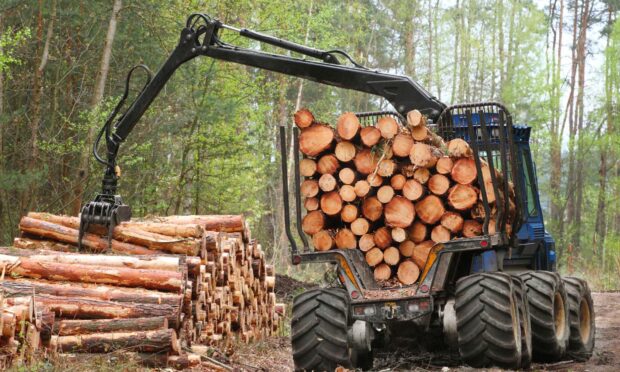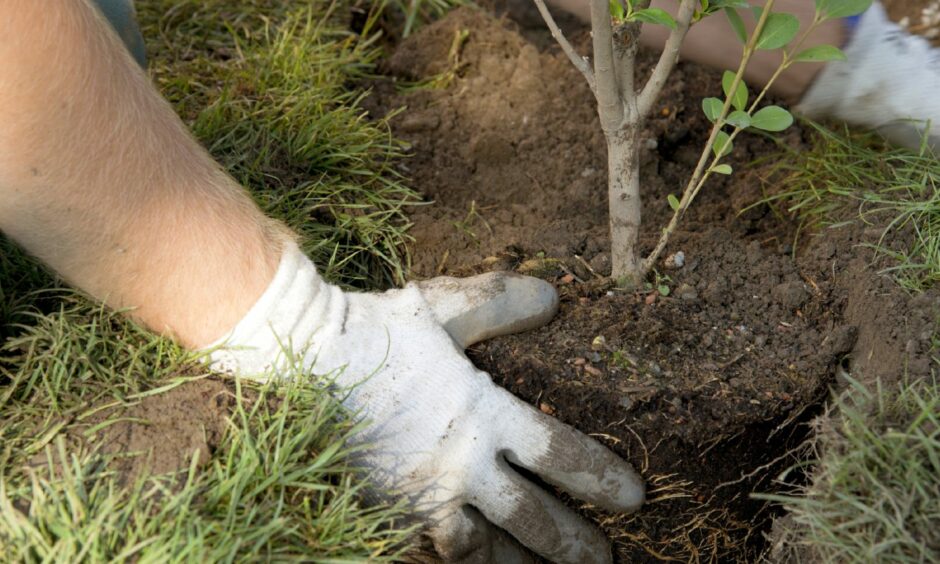Watching BBC’s The Green Planet is another opportunity to learn about how plants and trees are an integral part of life on earth as well as a never-ending source of amazing stories and images.
Sir David Attenborough brings these stories to life in a way that begs the question of who will ever replace him, and not just for his work on TV.
Sir David is a pragmatic individual who seeks solutions.
I remember an address he gave over 10 years ago to a forum of environmentalists and conservationists when he said the future was about protecting nature as the world changed around it, not simply trying to turn back the clock.
Many in the audience felt uncomfortable hearing that, but he was there to say what he believed needed to be said.
In addition, Sir David recognises the need to produce food and wood fibre as we strive for net zero and, I would add, as we seek to protect nature. These aims are very compatible in Scotland, especially in the north.
Opportunities in the north
Before the pandemic, Confor and Scottish Forestry funded a study into the opportunities provided by forestry in Caithness and Sutherland – an area where new jobs are needed and where carbon sequestration and nature have huge potential.
Swathes of forest are being cleared from the Flow Country in Caithness to restore peatland, but there is plenty of land suitable for modern productive forestry if we incentivise farmers and landowners and overcome the challenges of transporting timber on weak roads.
Timber prices have recently been at record highs and the trend is upwards.
Creating new forests can be integrated with farming, often resulting in increased production of both food and wood.
Overall, the study showed at least 40 well-paid jobs could be created across Caithness and Sutherland, with many more supported elsewhere in the Highlands.
Post-pandemic, it would be wonderful if this report could be brought back to life as it is still very much needed.
And I take heart from a survey published by Forestry and Land Scotland (FLS) over the festive period, which shows strong support for planting more forests in northern Scotland.
One key finding of the survey (of 1,000 people) showed 80% of those asked “strongly supported” an initiative to reforest the Highlands.
It also found 78% of people felt more should be done to support biodiversity in the Highlands, which is very interesting as the forests of the 21st Century can help tackle both the climate emergency and the biodiversity crisis – as well as delivering economic growth and jobs across rural Scotland.
The survey notes that the Scottish Highlands is already the most biodiverse region in the UK with more than 16,000 distinct types of plants, animals, fungi and microorganisms.
Some of Scotland’s most endangered and iconic species such as red squirrels, ospreys, sea eagles, hen harriers and pine marten thrive in productive forests.
Confor addressed the issue of wildlife and wood production in its 2020 report, Biodiversity, Forestry and Wood, which found that wildlife – both flora and fauna – can flourish in forests designed and managed against modern standards for sustainability.
Coming back to the FLS survey, more than 90% of respondents supported productive forestry as a way to mitigate climate change and for Scotland to become more self-sufficient in timber production.
This self-sufficiency point is crucial.
Reliance on imports
The UK imports around 80% of the timber it uses to make wood products, second only to China as a global net importer of timber. This simply isn’t good enough.
It puts more pressure on fragile forests abroad at a time when global timber demand is soaring and supply falling. We can, and must, do better.
Scotland has grasped the nettle (or perhaps thistle) in this area and in each of the last two years, has planted 80% of new woodland created in the UK – an appropriate mixture of productive trees (to lock up carbon and produce those wood products we all need) and trees targeted particularly at wildlife and public access.
The numbers chime with a previous survey, by Forest Research, which I wrote about in this column last summer.
It said people in Scotland who believe “a lot more trees should be planted” rose from 80% in 2011 and 88% in 2017 (the last study of its kind) to 92% in 2021.
88% of respondents agreed or strongly agreed that “trees are good because they remove carbon dioxide from the atmosphere and store it in wood”.
Those who thought public money should be spent so Scotland doesn’t become even more reliant on buying wood products from abroad increased from 29% in 2011 to 81% in 2021.
Perhaps part of this is because across Aberdeenshire, Moray and the Highlands, and down into Angus and Perthshire, their relatives and friends are employed in forestry and wood processing – in stable, well-paid jobs in a growth industry.
I’m delighted that people “get” modern forestry – and it’s vital that this is given a voice.
Rural areas are facing enormous changes – and we need to provide opportunities, not just more challenges.
In a post-pandemic world, forestry can be one of those opportunities.
- Stuart Goodall is Chief Executive of forestry and wood trade body Confor.



